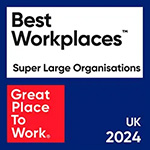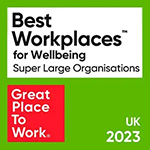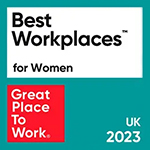NeuroLeadership Summit
Our Senior Director of Global Initiatives, Andrea Wicks Bowles, shares her key takeaways from the November NeuroLeadership Summit.
‘A More Human Organization’: that was the name of the NeuroLeadership Summit that took place on November 19th and 20th. The Co-Founders David and Lisa Rock promised a ’brain-friendly’ event, and they certainly did not disappoint, with two days of thought provoking and informative discussion. While each session was interesting, a few kept the audience particularly captivated.
Enhancing Workplace Culture
Workplace culture is a phrase we hear almost daily as a focus for employers. The premise of one session was that we can create workplace cultures that leverage how we as humans are wired, based on science of the brain and human behaviour.
This straightforward approach is global in nature and several universities were presenting research and current approaches to understanding the workplace. Jay Van Bavel from New York University (NYU) talked about teams: “As humans, cooperation is a key part of our human nature”. So within teams, what stops us from cooperating? Studies on breakthroughs show that they typically come from big teams not from superstars. Here are three interesting approaches to grow the capacity for team cooperation:
- Organisations that visibly reward cooperation and collaboration make it easier for employees to harmonise.
- Highlight role models for cooperation in a group;it makes the group think twice about not cooperating.
- Balance speaking time.Usually the person who speaks first (within the first two minutes) has the most influence in the group. The soft leader.
- “It’s not how much you talk, but how succinct”.People give their full attention during the first 30 seconds so being able to clearly articulate a message during this time can be critical for audience understanding.
- Once people get good at cooperating, put those people into new teams to spread the approach.
Removing Cognitive Clutter
Where do I focus my attention, represents the connection between someone’s cognitive capacity and clarity – in other words their quality of intelligent thoughts and ability to process and understand information. Mindfulness techniques were shown to be successful in increasing employee capabilities to better prioritise, a strategy Jay Connolly, Global Chief Talent Officer at Dentons, a multinational Law Firm, agreed has been effective. In fact, the ability to prioritise means becoming clear and focused on the essentials: employees experiencing cognitive overload generally take longer and are less effective in delivering output.
So what can the workplace do to reduce this cognitive clutter? Adam Alter from NYU’s Stern School of Business shared his research on Fluency, the experience of cognitive ease.
Leadership Models
Another presenter shared current thinking on leadership models as ‘a description of what you want leaders to do’. Andrea Derler, Director of Industry Research at NLI, encouraged building brain-friendly leadership models: designed to stick, be memorable and be meaningful, people are more likely to act on it; and to be coherent, clear and make sense.
Leadership should be a set of behaviours that everyone should apply regardless of titles. Arguably, it’s time to get off the title treadmill.
Removing Friction: Boosting Cognitive Capacity
By reducing friction points throughout the day, we can increase our cognitive capacity. How, you may wonder? First, map out the journey of the day, what you must accomplish, where you need to be etc. Next, begin to identify then reduce the number of transitions between events and activities. Eliminating the friction from unnecessary transitions is the goal. Finally, define the proper habits like where to sit (closed door room for thinking), bring relevant files, what you take action on and what can wait.
One enterprise-wide strategy is “email-batching”. Setting the system to send out batches of email three times a day at set times. It can reduce distractions and friction points that come from emails, IM, etc. during the day. These changes begin to shape the culture that supports the organization and can contribute to a new way of thinking about how we manage our time, employees, careers, and overall workplace environments.
Distance Bias
A word about the concept of Distance Bias: an unconscious preference to listen to, be influenced by, or just prefer those physically closer to you. The brain favours that which is closer to space and time. In global organisations or even local ones with virtual workers, we are not always able to be in the same room. Tessa West also from NYU has the following suggestions on how to structure workplace processes to be optimal:
- Call on the person participating from farthest away.
- Invite the most senior person to speak last.
- Encourage (almost make mandatory) that participants be on video.
Our Contributions At Work
Finally, there was reframing of how we think about our contributions at work. As leaders, Scott Kaufman Psychologist from Columbia University feels it is important that organisations are helping people constantly grow to be the best version of themselves’. The growth mindset approach to believing employees’ individual desire to learn and improve is important in today’s fast learning workplace environments.
A lot to think about and an exciting direction for future exploration into areas including workplace culture, management, and the employee experience!
Here are a few resources to consider:
https://neuroleadership.com/research/approach/scientific-research
https://scottbarrykaufman.com/
https://www.stern.nyu.edu/faculty/bio/adam-alter
https://as.nyu.edu/content/nyu-as/as/faculty/tessa-west.html
https://www.psych.nyu.edu/vanbavel/lab/lab-members.html




